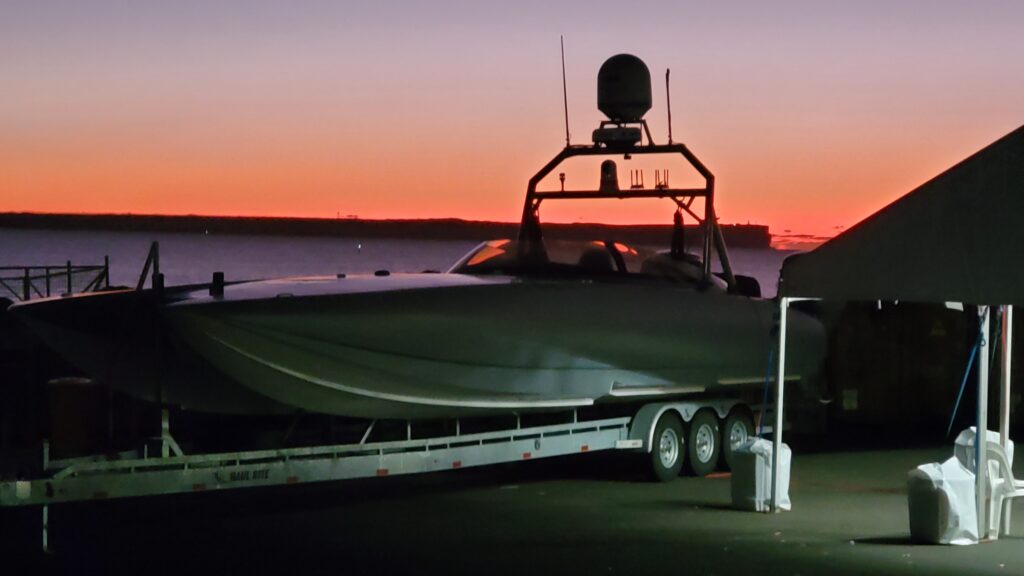
ARLINGTON, Va. — A family of high-speed unmanned surface vehicles has been getting a lot of play in naval exercises over the last year, helping the U.S. Navy to determine future requirements for USVs in roles such as maritime domain awareness.
Maritime Tactical Systems (MARTAC) operates a fleet of USVs the Navy has used in experimentation in such areas as the U.S. Naval Forces Central Command region and Australia.
The MARTAC USVs are contractor-owned and contractor operated. The small, fast craft can be operated in any weather. They are equipped with a forward-looking infrared sensor and can be fitted with various other sensors as the mission demands, such as signals intelligence sensors and sonars.
The missions being performed this summer require the MARTAC craft to be “a remote surveillance platform that can get places quickly and hang out for extended periods of time with high-res cameras,” said Bruce Hanson, CEO of MARTAC, a company based in Melbourne, Florida.
Hanson told Seapower that MARTAC’s USV’s participated in several demonstrations in International Maritime Exercise 22 under the control of Task Force 59, the U.S. 5th Fleet’s task force for experimentation of unmanned systems. The USVs also participated in Autonomous Warrior 22 in Australia.
“We’re too small, too dumb to realize what we can’t do, so we did a lot of stuff that people said we really couldn’t do, then we’re pretty successful at it, so some people are going to realize that these things operate pretty well,” Hanson said. “There are no going to replace people, but they are going to augment and enhance capabilities by a lot.”
Hanson said the company’s Devil Ray USV has extended persistence and would be a good partner with Saildrone’s USVs, which also have operated with Task Force 59. With its high speed, the Devil Ray can intercept a contact detected by a Saildrone.
The Devil Ray “can also protect the Saildrone,” Hanson said. “We can do things like picket lines … [and] non-lethal interdiction.”
He said the ranges on MARTAC’s USVs is greater than 1,000 nautical miles. MARTAC has sent its USVs, which are designed to be autonomous but can be optionally manned, on autonomous runs from Florida to the Bahamas and back.
The USVs can be shut down remotely and reactivated on command. Hanson said during Autonomous Warrior the company demonstrated the autonomous “launch and recovery of a T-12 USV off of the back of a T-38 USV.” He said the boats work very well in swarms or groups.
MARTACs family of USVs include the man-portable Manta series — 12 feet or less — which are battery and solar electric-powered. The Devil Ray series is 24+ feet long and can be diesel-or gasoline-powered. The company is working on hybrid versions, including fuel cells for power, which give exceptional range.
The various MARTAC craft have a high degree of component interchangeability, Hanson said. They are payload agnostic. They can be operated by different control systems with the flick of a switch, enabling the same craft to be operated by different nation’s navies.
Hanson said the MARTAC USVs will be participating in future large-scale exercises, including one in 2023.
- Insitu Going Strong at 30, Focusing on Maritime Operations - April 8, 2024
- Navy Awards Boeing Additional Funds for MQ-25 Drones for Testing - April 3, 2024
- Benign 4th Fleet AOR Useful for Unmanned Vehicle Operationalization, Admiral Says - March 27, 2024






